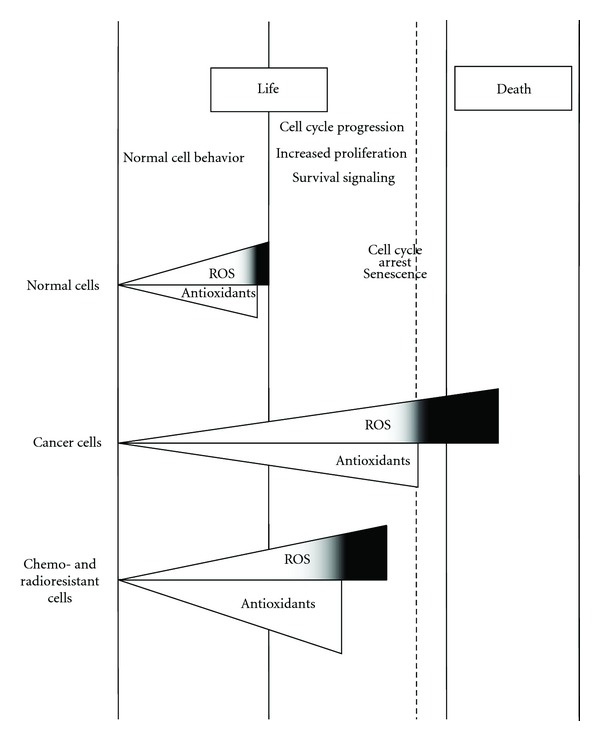Figure 2.

ROS level in normal, cancer, and chemo- and radio-resistant cancer cells. Under physiological conditions, normal cells maintain redox homeostasis with a low level of basal ROS by controlling the balance between ROS generation (pro-oxidants) and elimination (antioxidant capacity). Normal cells can tolerate a certain level of exogenous ROS stress owing to their “reserve antioxidant capacity.” The antioxidant reserve can prevent cell transformation and cell death. In cancer cells, the increase in ROS generation from metabolic abnormalities and oncogenic signalling may trigger a redox adaptation response, leading to an upregulation of antioxidant capacity, high ROS generation, and elimination to maintain the ROS levels below the toxic threshold. A further increase of ROS stress and in lipid peroxidation products in cancer cells (black space) using exogenous ROS-modulating agents or lipid peroxidation substrates is likely to cause elevation of ROS above the threshold level, leading to cell death. This might constitute a biochemical basis to design therapeutic strategies to selectively kill cancer cells using ROS-mediated mechanisms. Finally, excessive increase in intracellular ROS levels (and in lipid peroxidation products) as mediated by radiation therapy and chemotherapeutics may be repulsed by the tumour cells through an increase in the expression of endogenous antioxidants. This redox adaptation not only enables the cancer cells to survive under increased ROS stress, but also provides a mechanism of resistance to many anticancer agents and radiation therapy.
